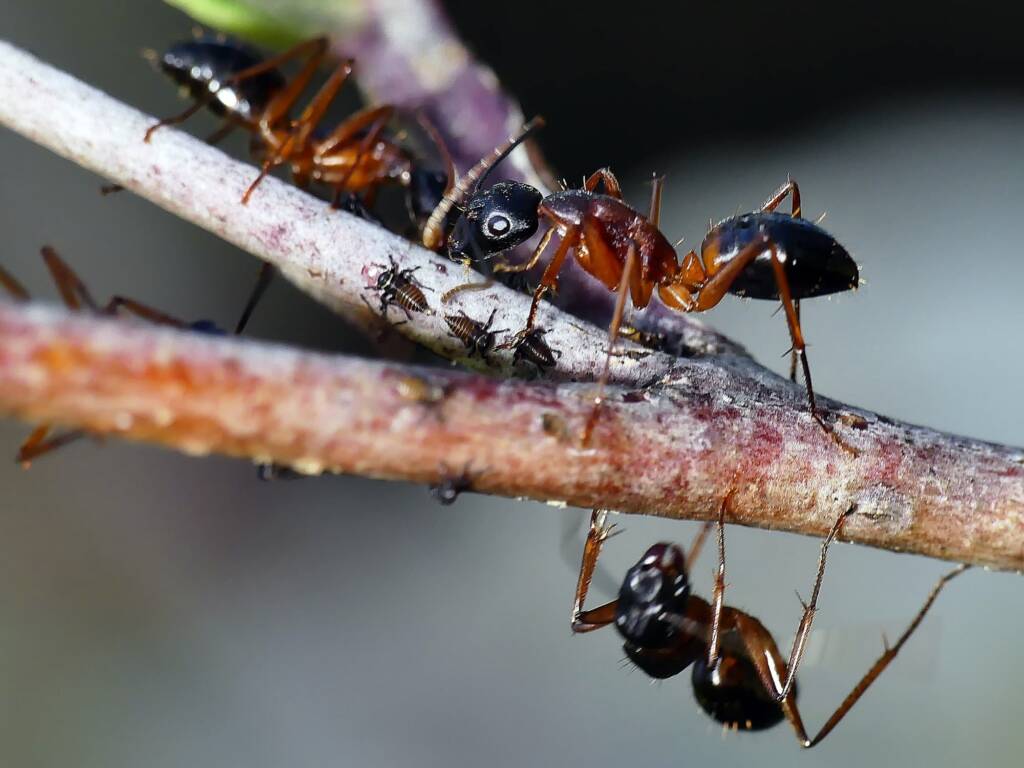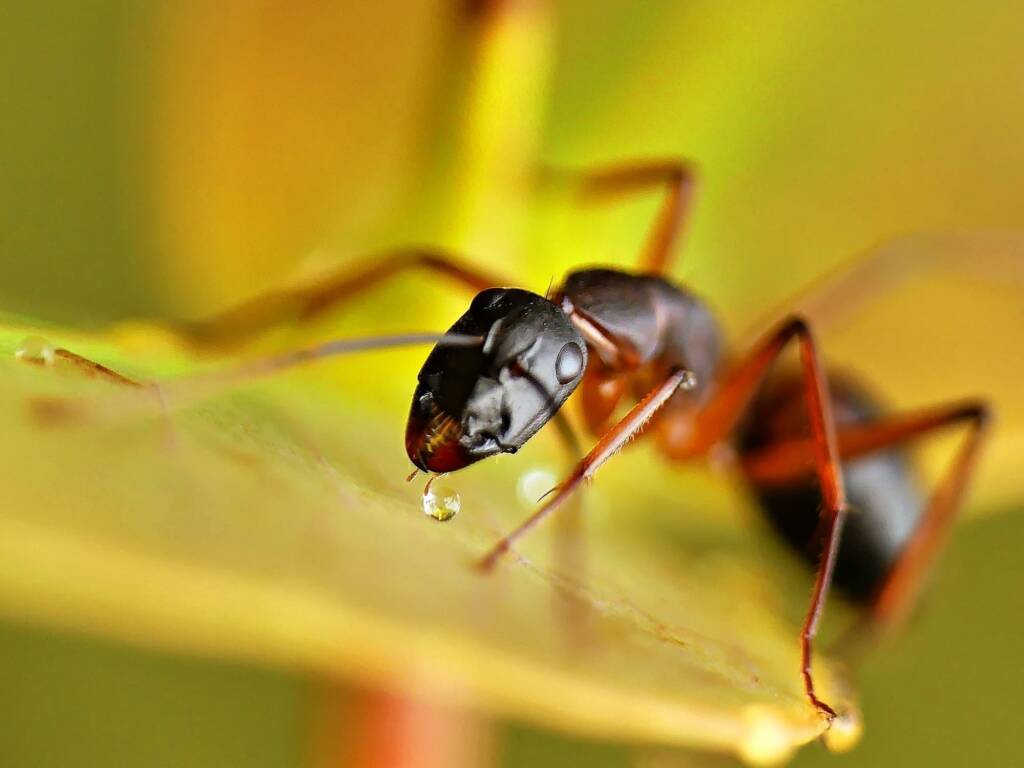FormicidaeAnts Camponotus aurocinctus Camponotus consobrinus (Banded Sugar Ant) Camponotus inflatus (Honey Ant) Dolichoderus doriae (Dolly Ant) Leptomyrmex erythrocephalus (Red-headed Spider Ant) Myrmecia brevinoda (Nocturnal Bull Ant) Myrmecia nigrocincta (Jumping Jack Ant) Myrmecia pilosula (Jack Jumper Ant) Myrmecia pyriformis (Inch Ant) Myrmecia rubripes (Bullant) Notoncus spinisquamis Oecophylla smaragdina (Green Tree Ant) Rhytidoponera aspera Rhytidoponera metallica (Green-head Ant)
Camponotus consobrinus, whose common name include Banded Sugar Ant, Nocturnal Sugar Ant and sugar ant, is native to Australia. They get their common names due to their liking for sugar and sweet foods.
A distinctive looking ant with an orange-brown band around its gaster.

The gaster being the bulbous shape end part of the body on an ant, which contains the ant’s heart, digestive system, and chemical weaponry. The tip of the gaster is where in some ants, you would find the sting. Other ants may have a tiny opening at the tip of their gaster, known as the acidopore, through which they spray out acidic irritant to stun their prey or to defend themselves.

This species of ant is relatively large and polymorphic, with two different castes of workers, the major workers (known as soldiers), and minor workers. They are between 5 to 15 mm in length, the queen being larger still. With ant species, where the workers are of varying sizes, the species is labeled polymorphic.

They are mainly nocturnal species, that prefers a mesic habitat (where the habitat is seasonally wet) and quite commonly found in forests and woodlands, although they are also found in urban areas.

Banded sugar ants are preyed upon by other ants, echidnas, and birds. The eggs of this species were consumed by Indigenous Australians.

- Scientific classification
- Kingdom: Animalia
- Phylum: Arthropoda
- Subphylum: Hexapoda
- Class: Insecta
- Informal: Pterygotes
- Order: Hymenoptera
- Superfamily: Verspoidea
- Family: Formicidae
- Subfamily: Formicinae
- Tribe: Camponotini
- Genus: Camponotus
- Species: Camponotus consobrinus
Footnote & References
- Banded Sugar Ant (Camponotus consobrinus), Photographs © Marianne Broug
- Banded Sugar Ant, mariannebroug, iNaturalistAU, https://inaturalist.ala.org.au/observations?place_id=any&subview=map&taxon_id=201978&user_id=mariannebroug&verifiable=any
- Banded sugar ant, Wikipedia, https://en.wikipedia.org/wiki/Banded_sugar_ant
- Ant anatomy for Beginners, Lizzie Harper, https://lizzieharper.co.uk/2022/06/ant-anatomy-for-beginners/
- Camponotus consobrinus (Erichson, 1842), Atlas of Living Australia, https://bie.ala.org.au/species/https://biodiversity.org.au/afd/taxa/45731de6-9ea2-47e4-8e43-83a26913f6f3
FormicidaeAnts Camponotus aurocinctus Camponotus consobrinus (Banded Sugar Ant) Camponotus inflatus (Honey Ant) Dolichoderus doriae (Dolly Ant) Leptomyrmex erythrocephalus (Red-headed Spider Ant) Myrmecia brevinoda (Nocturnal Bull Ant) Myrmecia nigrocincta (Jumping Jack Ant) Myrmecia pilosula (Jack Jumper Ant) Myrmecia pyriformis (Inch Ant) Myrmecia rubripes (Bullant) Notoncus spinisquamis Oecophylla smaragdina (Green Tree Ant) Rhytidoponera aspera Rhytidoponera metallica (Green-head Ant)
InsectsBees Beetles Blattodea Butterflies Coleoptera Cicada Crabronidae Diptera Dragonflies & Damselflies Formicidae Hemiptera Heteroptera (True Bugs) Mango Planthopper Moths Orthoptera Orthopteroid Processionary Caterpillar Stink Bugs, Shield Bugs and Allies Syrphidae Wasps Water Scorpion (Laccotrephes tristis) Witchetty Grub
